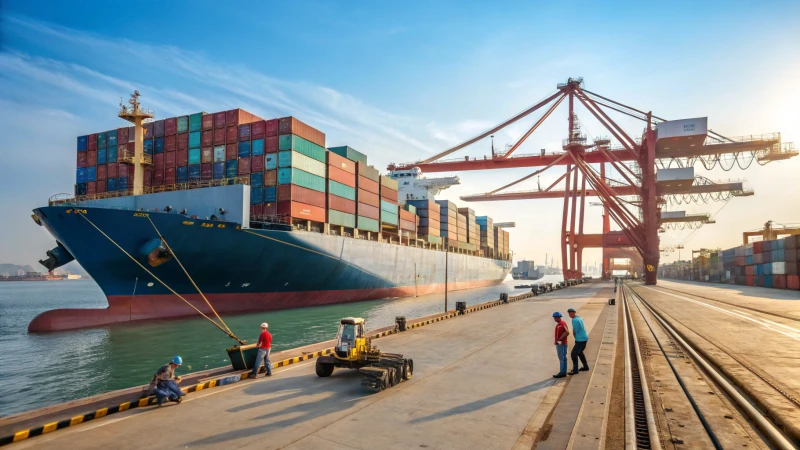Have you ever pondered why container ships often outshine bulk carriers in terms of value?
Container ships are valued higher than bulk carriers primarily because of their sophisticated technology, greater cargo handling efficiency, and significant role in global trade dynamics. These vessels facilitate faster and more economical shipping of diverse goods across the world, making them indispensable in modern logistics.
I remember the first time I really understood the magic of containerization. It was during a long conversation with a friend who worked in logistics. We were sipping our coffees, and she explained how container ships revolutionized shipping by allowing goods to be packed into standardized containers. This innovation meant faster loading and unloading times, reduced damage risks, and lower costs overall. It's like the difference between packing for a trip with one large suitcase versus trying to juggle a dozen small bags. Suddenly, everything made sense. Container ships didn't just transport cargo; they transformed how we move products globally, which naturally increased their market value compared to bulk carriers.
Container ships have more sophisticated technology than bulk ships.True
Container ships utilize advanced technology for efficient cargo handling.
Bulk carriers are faster than container ships in global trade.False
Container ships are generally faster due to their design for efficiency.
How Did Containerization Transform the Shipping Industry?
Have you ever wondered how a simple box could change the world of shipping forever? Containerization did just that, turning global trade into a sleek, efficient machine. Let me take you through this fascinating journey.
Containerization is the use of standardized containers to transport goods efficiently and securely. Introduced in the 1950s, it revolutionized shipping by streamlining logistics, cutting costs, and boosting speed and safety.
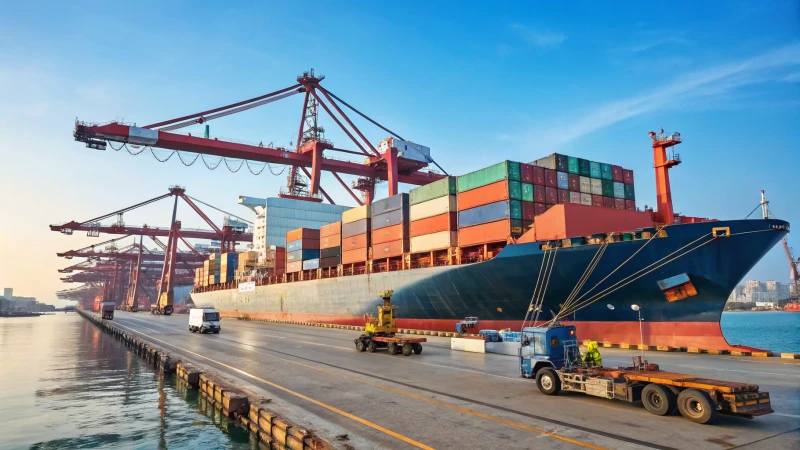
The Birth of Containerization
It all started with a trucking entrepreneur named Malcolm McLean in the 1950s. Imagine trying to streamline an industry bogged down by manual labor, inefficiency, and inconsistency. That's exactly what McLean did by proposing containers that could easily move between ships, trucks, and trains. I often think of how revolutionary this must have felt at the time—much like the first time I saw my e-commerce business smoothly handling multiple orders without a hitch.
Key Benefits of Containerization:
- Efficiency: With containers, loading and unloading became a breeze. It's like when I finally invested in inventory management software—it changed everything overnight.
- Cost Reduction: Less manual labor means lower costs. Think about all those extra coffees I could buy with the money saved!
- Security: Sealed containers ensure goods are safe during transit.
- Versatility: From fashion accessories to electronics, these containers handle it all.
Impact on Global Trade
The shift to containerization was monumental for global trade. By standardizing containers1, we integrated seamlessly into global transportation networks. This move gave birth to sprawling container ports and specialized ships that could carry massive amounts of goods. Before containers, shipping was like trying to run a marathon in flip-flops—slow and inefficient.
| Pre-Containerization | Post-Containerization |
|---|---|
| Manual loading/unloading | Automated handling |
| Higher risk of damage | Increased protection |
| Longer turnaround times | Faster shipping cycles |
Technological Advancements in Container Shipping
The technology behind container shipping has only gotten better. Today's tracking systems2 let me know where my shipments are at any given moment, offering peace of mind that's priceless. Imagine checking your phone and seeing exactly where your stock is—no more sleepless nights!
And then there are smart containers. These guys are equipped with sensors to monitor temperature and humidity, ensuring everything arrives in perfect condition. Plus, mega-ships carrying thousands of containers have slashed the cost per unit, making shipping more economical than ever. With growing environmental considerations3, eco-friendly ships are taking center stage too.
Challenges and Future Prospects
Of course, no change is without its challenges. Port congestion remains an issue—like trying to find a parking spot during holiday shopping season. Larger ships need deeper ports and better infrastructure, which isn't always readily available.
Looking ahead, innovations like blockchain and AI promise to further streamline operations, enhance security, and cut costs. But as we embrace these technologies, addressing environmental concerns will be vital in shaping the future of container shipping.
Containerization started in the 1960s.False
Containerization began in the 1950s with Malcolm McLean's innovation.
Mega-ships reduce the cost per shipping unit.True
Mega-ships carry thousands of containers, lowering the cost per unit.
How is technology transforming container ships into modern marvels?
Picture this: a bustling port, towering cranes, and the hum of engines as container ships prepare to set sail. Ever wondered how technology is steering these giants into the future?
Technology boosts container ships' value by streamlining operations with digital navigation, automated loading systems, and eco-friendly engines, resulting in quicker transit, lower costs, and enhanced sustainability.
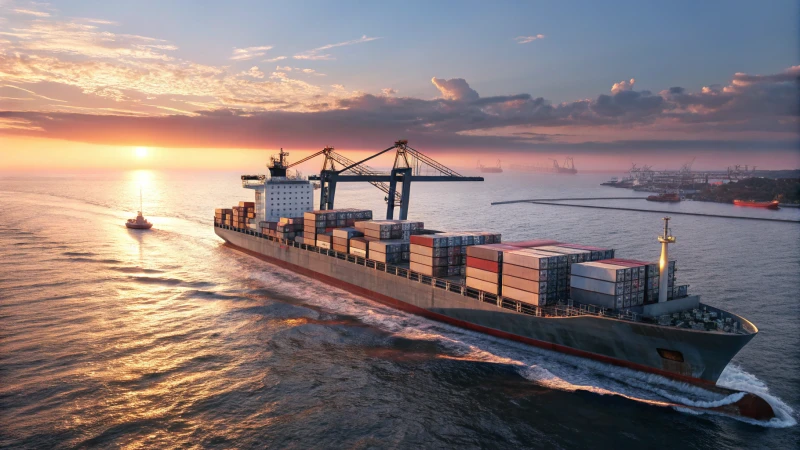
I remember the first time I watched a container ship glide gracefully out of a harbor. It was like seeing a small city drift across the ocean. What really struck me was the sheer scale of it all and the thought of the technology working tirelessly behind the scenes to make it all possible. Let’s dive into the tech marvels that are making these floating fortresses more valuable than ever.
Digital Navigation and Route Optimization
Imagine being at the helm of a colossal ship, navigating through unpredictable seas. It’s akin to planning a cross-country road trip with changing weather and traffic. Digital navigation systems act like a GPS on steroids, optimizing routes with real-time data. They guide ships away from storms, ensuring safer and faster journeys while conserving fuel. These systems remind me of when I used my first GPS – suddenly, getting lost was a thing of the past! The implementation of advanced digital systems4 is transforming how captains steer these giants across the globe.
Automated Loading Systems
Loading a container ship used to be a logistical nightmare, akin to playing a giant game of Tetris but with more at stake. Today, automation has turned this chaos into a symphony of precision. Advanced cranes operate with the elegance of a ballet dancer, loading containers efficiently and reducing time spent in ports. This reminds me of watching factory robots in action – mesmerizing in their accuracy and speed. Explore more about automated port technology5.
Fuel Efficiency and Sustainability
The shift towards greener engines is like swapping your gas-guzzler for a hybrid car. Modern ships are embracing hybrid propulsion systems and alternative fuels like LNG, slashing emissions while maintaining power. It's like when I switched to an electric vehicle – I felt part of a movement towards sustainability, knowing every journey was a step towards a cleaner planet.
| Technological Feature | Benefits |
|---|---|
| Digital Navigation | Reduced transit times, safer journeys |
| Automated Loading Systems | Lower labor costs, faster operations |
| Fuel-efficient Engines | Decreased emissions, cost savings |
This shift towards greener technologies supports sustainable shipping practices6, aligning with global environmental goals.
Connectivity and Smart Shipping
With IoT technology, container ships are like smart homes on water. They monitor cargo conditions in real-time, ensuring products arrive fresh and intact. This connectivity offers unparalleled transparency in the supply chain, similar to tracking a package from your favorite online store. Dive into how smart shipping solutions7 are reshaping maritime logistics.
These technological strides are not just about efficiency; they are redefining the very essence of shipping in today’s global trade arena. Each advancement is like turning the pages of a captivating novel, revealing new possibilities chapter by chapter.
Digital navigation reduces fuel consumption in shipping.True
Digital systems optimize routes, cutting fuel use and transit times.
Automated loading increases labor costs in ports.False
Automation lowers labor costs by speeding up loading processes.
How do container ships boost economic benefits?
I once found myself staring at a pile of shipping invoices, wondering if there was a smarter way to get my products across the ocean. Then, I discovered the world of container ships.
Container ships offer economic benefits by drastically reducing shipping costs, improving efficiency, and achieving economies of scale. They streamline transit times, cut down on handling errors, and promote seamless international trade, thereby enhancing global economic productivity.
Cost Efficiency and Economies of Scale
Container ships significantly reduce shipping costs by allowing more goods to be transported at once, leading to economies of scale. By consolidating shipments into containers, companies save on handling costs8 and enjoy reduced freight rates.
| Aspect | Benefit |
|---|---|
| Bulk Shipping | Lower per-unit cost |
| Containerization | Reduced handling fees |
Improved Transit Times and Reliability
Once, I had a shipment that needed to arrive in record time. The use of standardized containers ensures faster loading and unloading, reducing port stay times. This efficiency translates into shorter transit times, which is crucial for time-sensitive goods9.
Enhanced Global Trade and Market Access
Expanding into new markets used to feel daunting until I realized how containerization lowers trade barriers. Businesses can now enter international markets with ease, reaching customers globally. This expansion supports economic growth by increasing trade volumes and creating job opportunities.
Environmental Impact and Sustainability
While I’m conscious of the environmental impact of shipping, it's comforting to know that container ships are actually more fuel-efficient than other transport modes for large volumes. Innovations in green shipping technologies10 are paving the way for a more sustainable future.
Choosing container ships has been a game-changer for my business. They not only slash costs but also play a crucial role in global economic development by making market access and trade more efficient. These vessels are reshaping how we view modern supply chains today.
Container ships reduce shipping costs by 50%.False
While they reduce costs, the exact percentage varies and is not fixed at 50%.
Containerization lowers handling fees significantly.True
Standardized containers streamline processes, reducing handling fees effectively.
How Do Market Trends Influence the Valuation of Container Ships?
Ever wonder how the waves of market trends sway the value of those massive container ships? It's like a dance between demand, fuel prices, and the world's economic pulse.
Market trends influence container ship valuation by affecting demand for shipping services, impacting fuel costs, and altering global trade patterns, which in turn affect shipping rates and asset values.
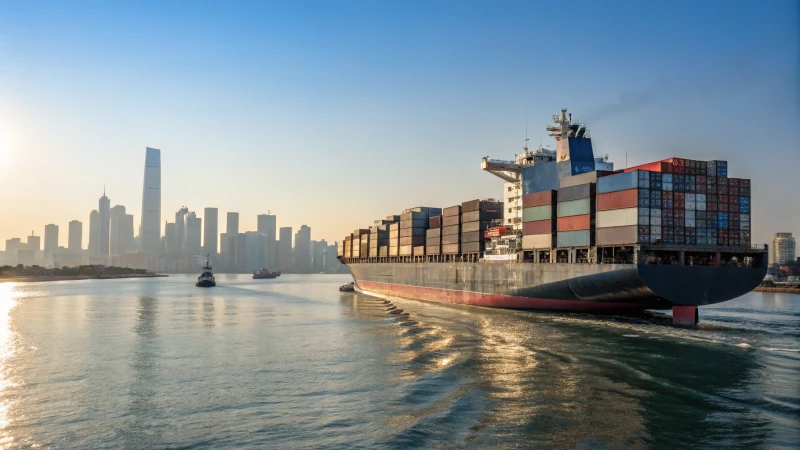
Understanding Supply and Demand Dynamics
The valuation of container ships is significantly driven by supply and demand within the global trade market. When demand for shipping services11 rises, due to increased global trade, the value of container ships typically increases. Conversely, an oversupply of ships can lead to a decrease in valuations.
| Factors | Impact on Valuation |
|---|---|
| Increased Demand | Higher valuations due to more cargo movement |
| Oversupply | Lower valuations due to excess capacity |
Example: The Impact of Economic Growth
During periods of robust economic growth, such as post-recession recoveries, there is often a surge in global trade, increasing the demand for container ships. This demand can drive up charter rates, thus enhancing ship valuations.
Fuel Prices and Operational Costs
Fuel costs represent a significant portion of a ship's operational expenses. Fluctuating fuel prices12 can thus have a direct impact on ship valuations. When prices increase, operational costs rise, which can decrease profitability and subsequently affect valuations.
- Low Fuel Prices: May lead to higher profitability and increased valuations.
- High Fuel Prices: Could reduce profitability, lowering valuations.
Global Trade Patterns
Shifts in global trade patterns, influenced by geopolitical tensions or trade agreements, can also impact container ship valuations. For example, new trade routes emerging from agreements like the RCEP (Regional Comprehensive Economic Partnership) might increase demand for specific shipping lanes13, affecting ship values based on their adaptability to these routes.
The ability of a container ship to adapt to changing trade routes or comply with new regulations can be a critical factor in its valuation.
Conclusion: A Complex Interplay
While it's essential to consider each factor individually, understanding how they interconnect can offer deeper insights into the valuation process. Investors and maritime economists must continuously monitor these trends to make informed decisions about container ship investments.
Increased demand raises container ship valuations.True
Higher demand for shipping services boosts charter rates, increasing valuations.
High fuel prices lead to higher container ship valuations.False
High fuel prices increase operational costs, reducing profitability and valuations.
Why do bulk carriers still play a crucial role in global trade?
I've always been fascinated by how bulk carriers remain essential in the shipping industry, even with their lower valuations. These ships are the unsung heroes, transporting the vital raw materials that fuel our economies. But what makes them so indispensable today?
Bulk carriers remain vital due to their unmatched capacity to transport large quantities of raw materials efficiently. Their specialized design allows them to handle diverse cargo, ensuring their indispensability in global trade.
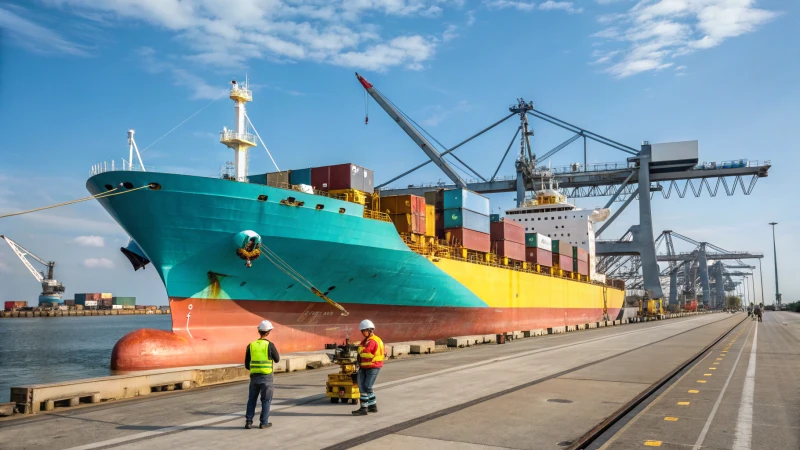
The Versatility of Bulk Carriers
Every time I think about the sheer variety of goods transported across the oceans, it amazes me how bulk carriers manage it all. From coal14 to grain and ores, these ships handle it with ease, proving themselves essential to global supply chains. I recall a time when an economic boom meant an increased demand for construction materials. Watching these massive vessels meet that demand was nothing short of impressive.
Cost-Effectiveness in Operations
When I first learned about the operating costs of bulk carriers, I was surprised at how efficient they are. With fewer crew members and simpler loading systems, they manage to keep costs low, making them perfect for transporting goods that aren't necessarily high-value. It's this efficiency that makes them a go-to shipping solution15 for bulk goods.
Impact of Market Dynamics
I've noticed how the market can be a rollercoaster ride for bulk carriers. When demand spikes for raw materials, so do freight rates, temporarily boosting their value. However, it's a cyclical market, and those freight rates16 can dip just as quickly. It’s a reminder of how dynamic this industry is.
| Type of Bulk Carrier | Common Cargo | Key Features |
|---|---|---|
| Capesize | Iron ore, coal | Large capacity |
| Panamax | Grain | Suitable for Panama Canal |
| Handymax | Fertilizer | High maneuverability |
Environmental Considerations
With sustainability becoming more crucial, I've seen how bulk carriers are evolving to meet these new standards. From hull design tweaks to exploring alternative fuels, these innovations aim to boost eco-friendliness17 without losing efficiency—a delicate balance that's being navigated skillfully.
The Role of Technological Advancements
Modern bulk carriers are a testament to technological progress. I’ve witnessed how GPS tracking and automated systems streamline operations and enhance safety, aligning with the industry's push towards modernization18. These advancements ensure bulk carriers remain competitive and relevant in today’s fast-paced world.
Bulk carriers have lower operating costs than other vessels.True
Bulk carriers require fewer crew and simpler loading, reducing costs.
Bulk carriers are not affected by market dynamics.False
Freight rates for bulk carriers fluctuate with market demand.
Conclusion
Container ships are valued higher than bulk carriers due to advanced technology, efficiency in cargo handling, and their crucial role in global trade dynamics.
-
This link provides an in-depth understanding of how standardization transformed global trade efficiency. ↩
-
Learn about real-time tracking systems that boost reliability in container shipping. ↩
-
Explore how environmental considerations are influencing modern container ship design. ↩
-
Learn how advanced digital navigation systems optimize shipping routes and enhance safety. ↩
-
Discover how automation boosts port efficiency by speeding up loading operations. ↩
-
Explore technologies making shipping more sustainable and environmentally friendly. ↩
-
Understand how IoT enables real-time cargo monitoring and improves supply chain transparency. ↩
-
Explores how containerization reduces manual labor and associated costs by simplifying the logistics process. ↩
-
Highlights the importance of swift delivery for perishable and high-demand products in maintaining supply chain efficiency. ↩
-
Discusses innovations like alternative fuels and energy-efficient designs that reduce the environmental impact of shipping. ↩
-
Explore this link to understand how changes in shipping demand impact the valuation of container ships. ↩
-
Check this link to learn about the relationship between fuel prices and container ship operational costs. ↩
-
Discover how international trade agreements influence global shipping lanes and container ship valuations. ↩
-
Understanding the types of cargo bulk carriers transport reveals their versatility and importance in global trade. ↩
-
This comparison highlights the cost-effectiveness and operational efficiency of bulk carriers. ↩
-
Checking current rates can provide insights into market trends affecting bulk carrier valuations. ↩
-
Learning about these advancements helps understand how the industry is responding to environmental pressures. ↩
-
Exploring technology helps appreciate how it enhances safety and efficiency in the shipping industry. ↩

